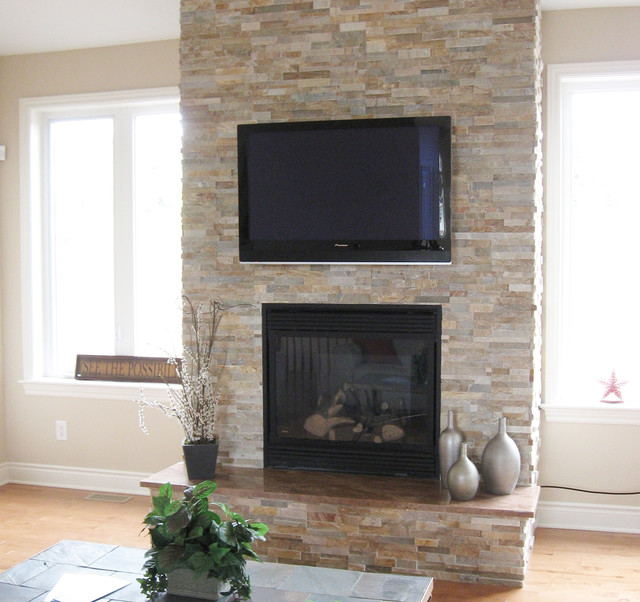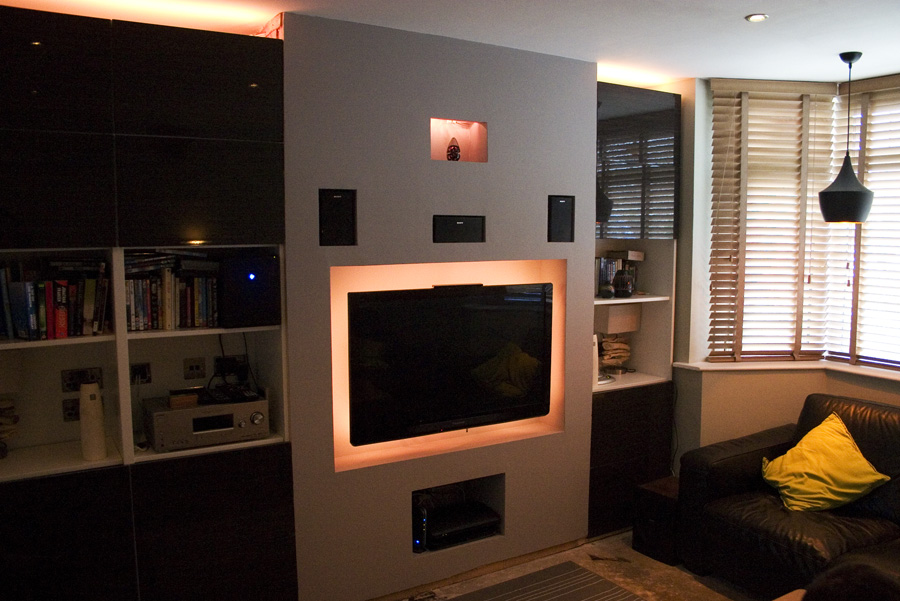Hi all.
I built this stud fireplace last year with a combination of stud work (various sizes of wood - it's absolutely solid - and plasterboard), and then had it plastered before painting it up.
Had the choice of either keeping it as it is, wallpapering it or adding stone tiles to it. The last choice has proved most popular (the other half rubber stamping it too).
The tiles I really like are those really thin, rectangular ones as in the examples below:



I'm edging towards the more clean lined versions of stone tiles/clad rather than the overtly 'rustic' and I'm very conscious of costs too.
I happened on a few in Wickes, whilst browsing for something else recently. These seemed to be set in sheets (I guess you'd cut the backing depending on the area you're cladding. But aside from that I haven't actively looked into them. I've tiled a bathroom a few years back (applying less critically than I would do today!) and have an oldish tile cutter (still works, albeit noisy and messy!).
This last pic is of my fireplace. Tricky bits might be around the speaker sections as there's not a lot of space to play with (thin sections).

I guess given the size of the sections (top of the alcove to the bottom of the speaker insets) it would be easier to try and find the thinner tiles (10mm height?) and on a 'strip'?
Any tips and suggestions would be most appreciated.
Many thanks.
I built this stud fireplace last year with a combination of stud work (various sizes of wood - it's absolutely solid - and plasterboard), and then had it plastered before painting it up.
Had the choice of either keeping it as it is, wallpapering it or adding stone tiles to it. The last choice has proved most popular (the other half rubber stamping it too).
The tiles I really like are those really thin, rectangular ones as in the examples below:



I'm edging towards the more clean lined versions of stone tiles/clad rather than the overtly 'rustic' and I'm very conscious of costs too.
I happened on a few in Wickes, whilst browsing for something else recently. These seemed to be set in sheets (I guess you'd cut the backing depending on the area you're cladding. But aside from that I haven't actively looked into them. I've tiled a bathroom a few years back (applying less critically than I would do today!) and have an oldish tile cutter (still works, albeit noisy and messy!).
This last pic is of my fireplace. Tricky bits might be around the speaker sections as there's not a lot of space to play with (thin sections).
I guess given the size of the sections (top of the alcove to the bottom of the speaker insets) it would be easier to try and find the thinner tiles (10mm height?) and on a 'strip'?
Any tips and suggestions would be most appreciated.
Many thanks.

